Photosynthesis II
2017-12-01
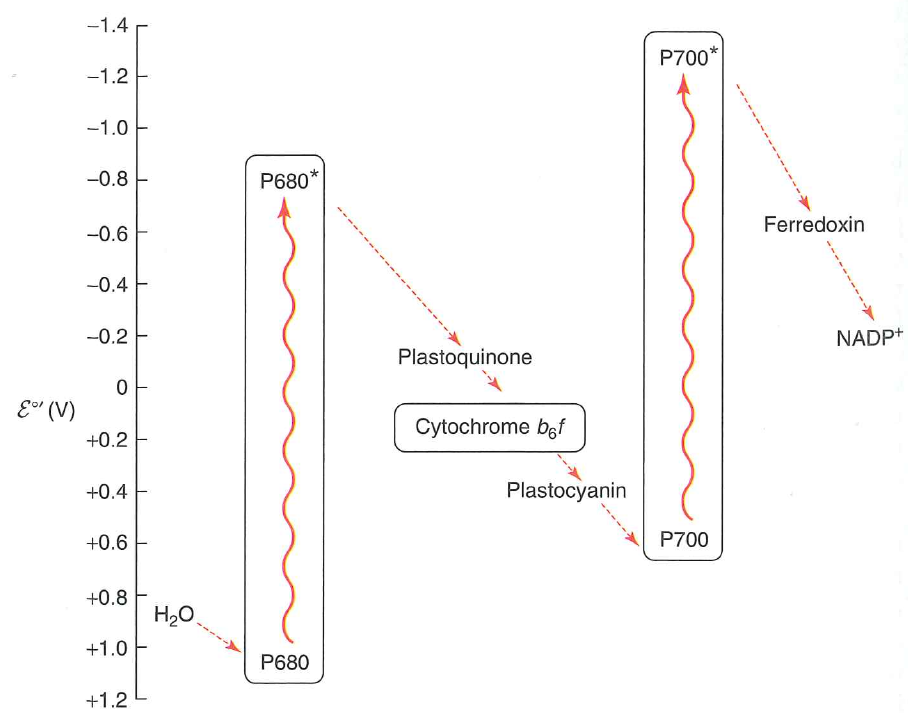
Question 1
Slower. Less energy difference between fuel and terminal electron acceptor
Question 2
Everything before plastocyanin will load up.
Everything before plastocyanin. P700 cannot photo oxidize plastocyanin
Yes, ATP will still be generated. First steps transport protons
Question 3
Exciton coupling allows the plants to build antenna pigments that capture photons and feed them into photosystem I and II
Conceptual goals
- Understand the basic transformations of carbon fixation
Skill goals
- Reason about the energetic and redox requirements of this process.
The OneOak Tree (sylva.org.uk/oneoak/)

Average weight of an acorn is ~0.005 kg
The OneOak Tree (when chopped down) had a dry weight of 9,923 kg (weight of 11 sedans).
Of this dry weight, 4,962 kg was carbon (5.5 sedans).
All of this carbon entered the tree as $CO_{2}$
Carbon "fixation" is critically important for our ecosystem and atmosphere!
The basic reaction:
$6CO_{2} + 6H_{2}O \rightarrow 6O_{2} + C_{6}H_{12}O_{2}$
What do we need to run this reaction?
- Energy (this is an unfavorable reaction)
- Control over electrons (this is a net reduction)
What are the main "products" of the light reaction?
$NADPH$ and $ATP$
This products feed directly into the carbon-fixation reactions giving energy and electrons
NADH and NADPH differ at a single phosphate
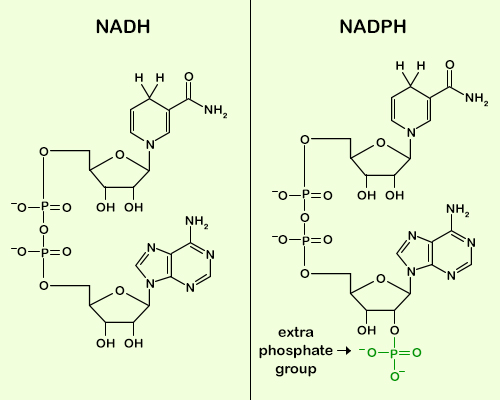
Source: buzzle.com
$NAD^{+}$ is used for oxidative pathways, $NADH$ is used rarely for reductive pathways
$NADP^{+}$ is rarely used for oxidation, $NADPH$ is used for reductive pathways
$CO_{2}$ is "fixed" via the Calvin Cycle
Net reaction:
$3CO_{2} + 9ATP + 6NADPH + 6H^{+} \rightarrow$
$G3P + 9ADP + 8P_{i} + 6NADP^{+}$
Where have we seen glyceraldehyde 3-phosphate before?
$3CO_{2} + 9ATP + 6NADPH + 6H^{+} \rightarrow$
$\color{red}{G3P} + 9ADP + 8P_{i} + 6NADP^{+}$
In glycolysis

Glyceraldehyde-3-phosphate links photosynthesis to the rest of metabolism
G3P is often converted into glucose-6-phosphate, then a long sugar polymer (starch) for storage
(Note: Other intermediate sugars in the Calvin cycle can also be converted into core metabolic intermediates)
Cool aside: chloroplasts import $P_{i}$ and export their 3-carbon products in coordinated fashion to keep enough phosphate in the chloroplasts
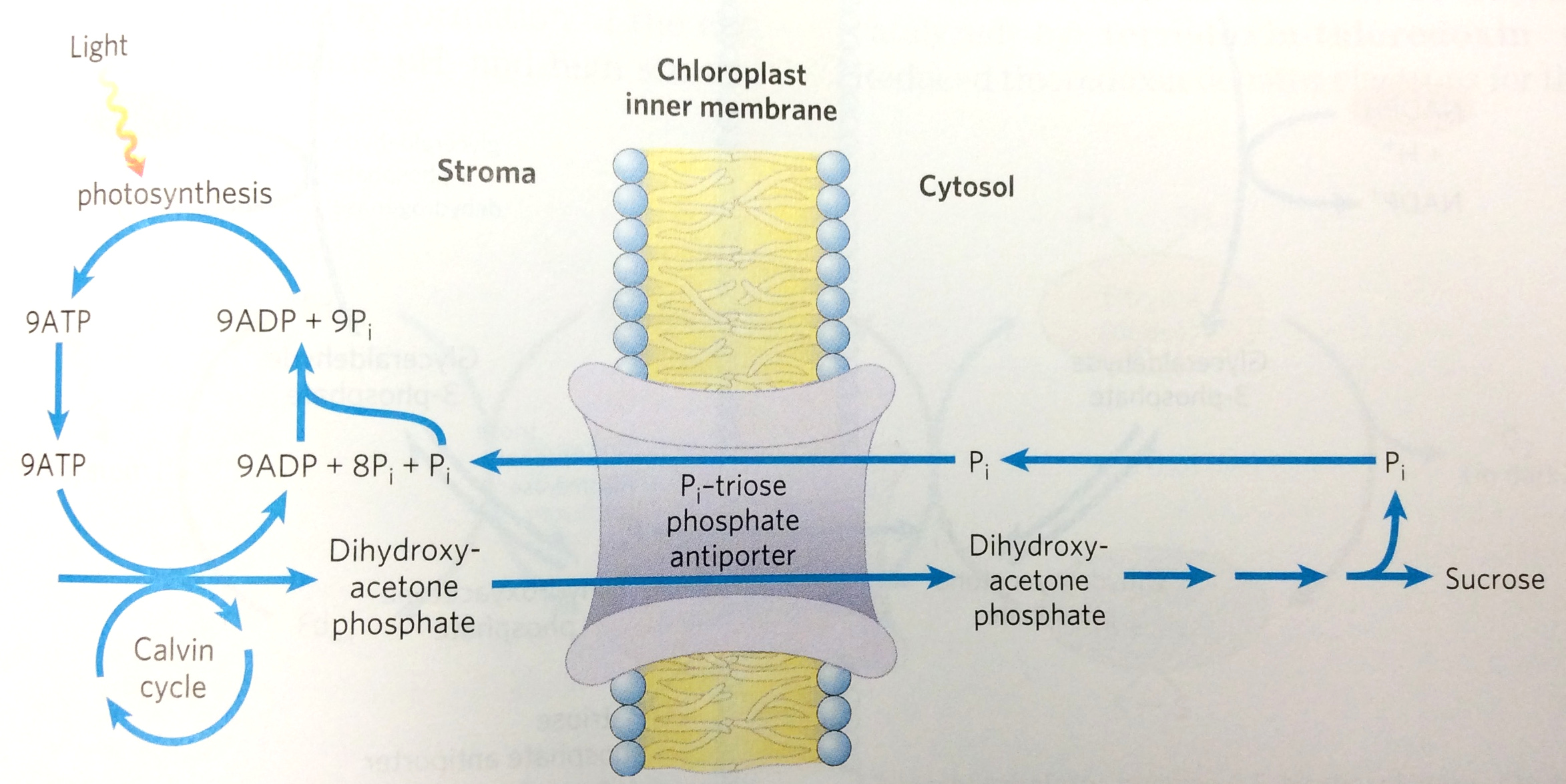
$3CO_{2} + 9ATP + 6NADPH + 6H^{+} \rightarrow$
$G3P + 9ADP + 8P_{i} + 6NADP^{+}$
What sorts of chemical transformations might be going on?
Maybe: $3CO_{2} \rightarrow C_{3}$?
Maybe: $C_{2} + CO_{2} \rightarrow C_{3}$?
The old metabolism standby: something more complicated
The Calvin Cycle
- Take 3 ribulose-1,5-bisphosphate molecules (a 5 carbon sugar)
- Stick on 3 carbon dioxide molecules
- End up with 3 ribulose-1,5-biosphosphate plus one new 3-carbon sugar
But it's even more excitingly complicated!
The Calvin Cycle shuffles carbons around

The Calvin Cycle shuffles carbons around
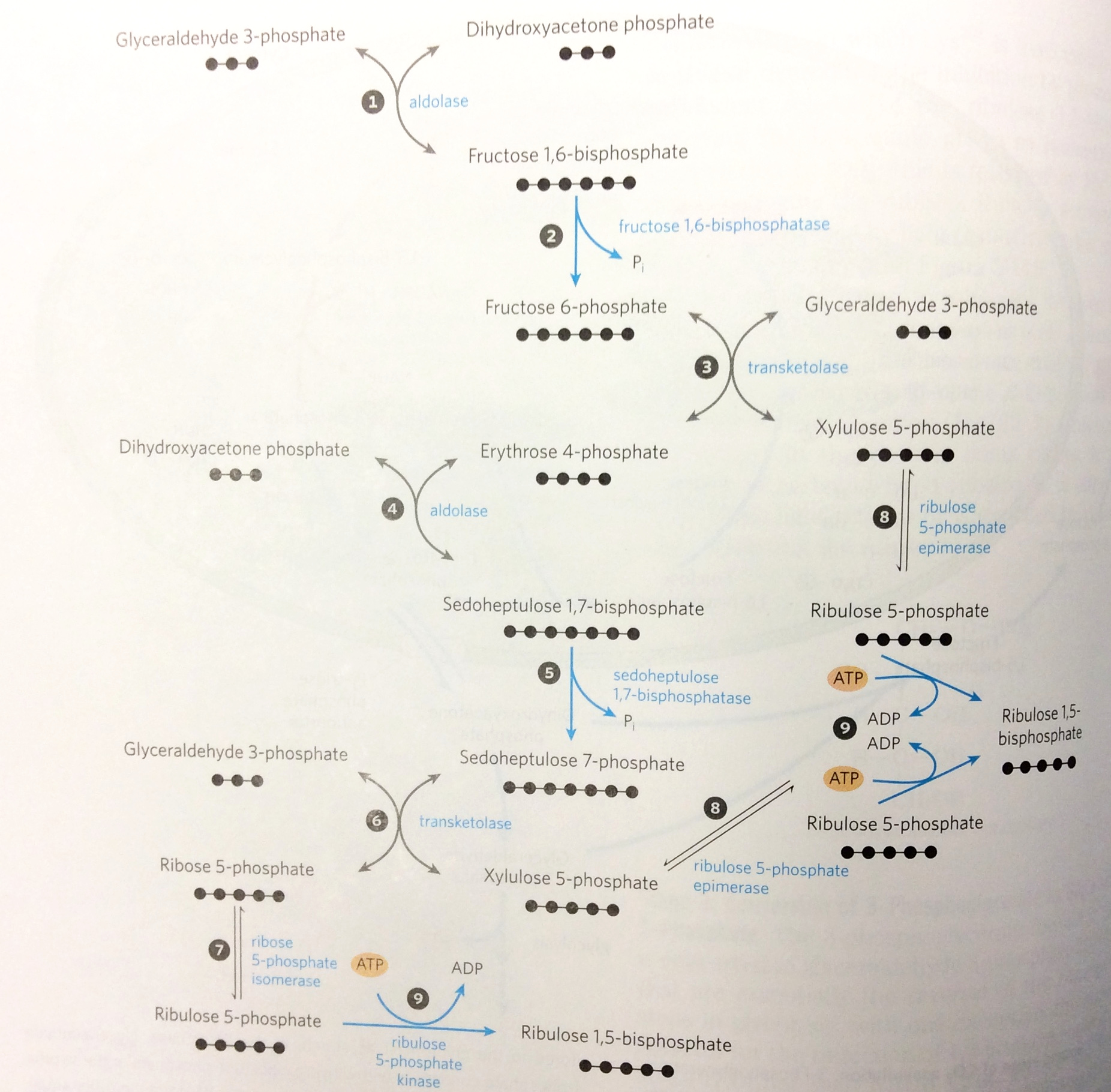
This complexity is mediated by many of the same enzymes and metabolites that are in core metabolism
But this is all happening isolated from the rest of the cell, in the chloroplasts
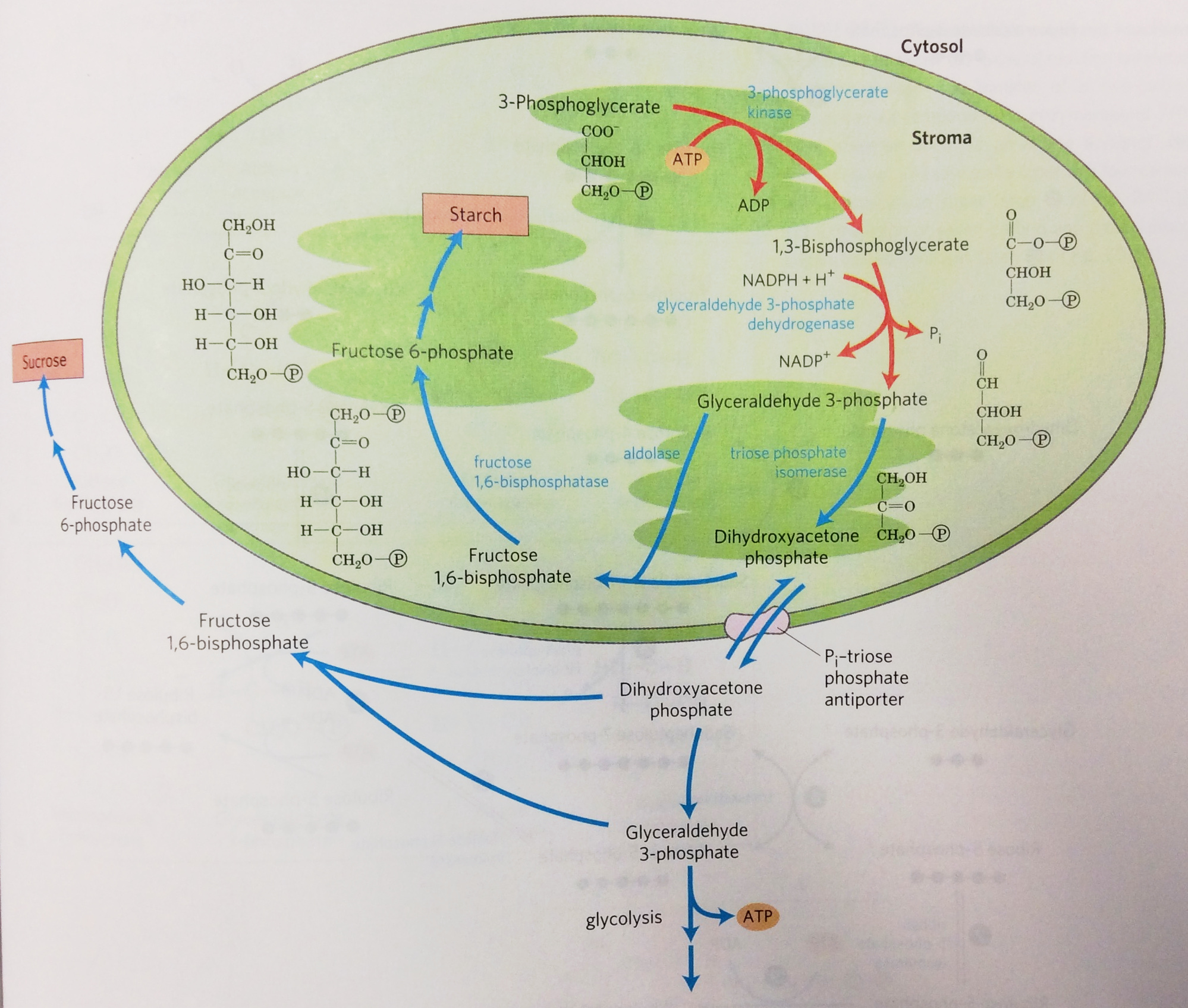
The key reaction in the Calvin cycle is the reduction of $CO_{2}$.
This is achieved by the enzyme Rubisco (also known as RibUlose 1,5-BISphosphate Carboxylase/Oxygenase)
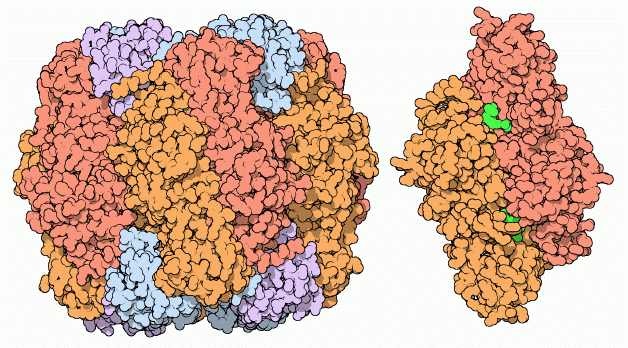
Source: rscb.org
Rubisco catalyzes the following reaction:

Net:
5 carbon sugar + $CO_{2} \rightarrow$ 2 3-carbon sugars
These sugars then feed into the mess that is the calvin cycle
Rubisco makes up 1/2 of chloroplast protein content and is the must abundant protein on earth.
Why might this be?
Reaction is important and rubisco is really slow!
Rubisco turns over only about 3 $CO_{2}$ per second.
Protein engineers are actively working to improve rubisco to improve plant growth
Summary:
- Converting $CO_{2}$ into more complex sugars (fixation) requires energy and electrons
- The products of the light reactions ($ATP$ and $NADPH$) are the source of energy and electrons
- $CO_{2}$ is fixed via the Calvin cycle: complex series of sugar rearrangements that yield a new glyceraldehyde 3 phosphate molecule
- G3P links photosynthesis to the rest of metabolism
- The hardest step in this process is the initial reduction of the $CO_{2}$ carbon, catalyzed by rubisco
Review session at 9 am on Thursday, Allen 141
Final on Friday, December 8th, 10:15 am to 12:15 pm
McKenzie 229 (this room)